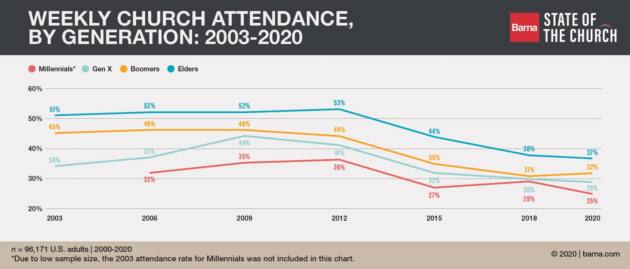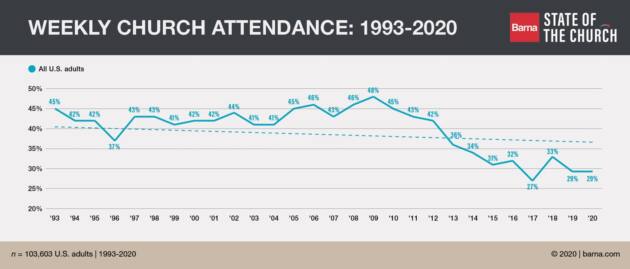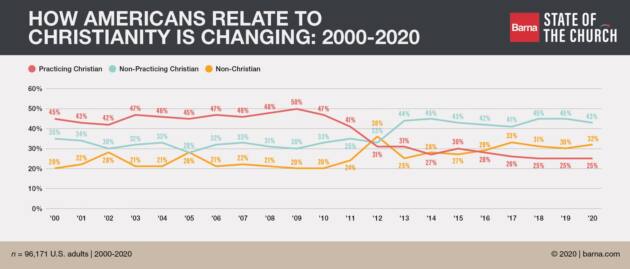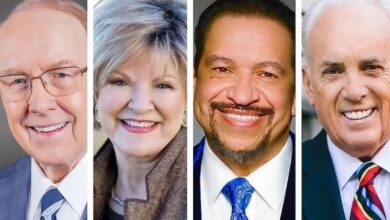Number of practicing Christians continues decline in U.S.
U.S. churches will have to adjust to new data that show that the number of practicing Christians continues to decline.
Practicing Christians are now a much smaller segment of the entire population, according to new research by Barna. In 2000, 45 percent of all those sampled qualified as practicing Christians. That share has consistently declined over the last 19 years. Now, just one in four Americans (25 percent) is a practicing Christian. In essence, the share of practicing Christians has nearly dropped in half since 2000.
READ: Poll chronicles faith in America
Where did these practicing Christians go? The data indicate that their shift was evenly split. Half of them fell away from consistent faith engagement, essentially becoming non-practicing Christians, while the other half moved into the non-Christian segment This shift also contributed to the growth of the atheist/agnostic/none segment, which has nearly doubled in size during this time
“A lot of religion research — even Barna’s — tracks single factors, such as church attendance,” Barna President David Kinnaman said. “But the ‘practicing Christian’ measure is unique in that it combines three variables: calling oneself a Christian, strongly prioritizing faith and regular church attendance. Because each of those three factors have declined over the last twenty years among all adults, the net effect shows the major reshuffling of Americans spiritual lives. Monthly, committed churchgoers are now about half as common as they were two decades ago. This shift has major repercussions for church leaders as there is increased struggle to attract and retain the active segment of churchgoers.”
In actual numbers, 36 percent fewer Americans attended church weekly in 2020 than in 1993. This change could be correlated to a number of reasons, including the growing number of Gen Z and Millennials making up the U.S. population; disputes about who gets to be a part of or lead in the church; past and current church scandals; and perceptions of the church’s role in politics, to name a few.
“While the decline of Christian engagement is real, the data remind us that one-quarter of the population qualifies as a practicing Christian,” Kinnaman said. “This represents more than 80 million adults — a level of churchgoing that is a statistical outlier among affluent and educated societies.”
–Alan Goforth | Metro Voice










